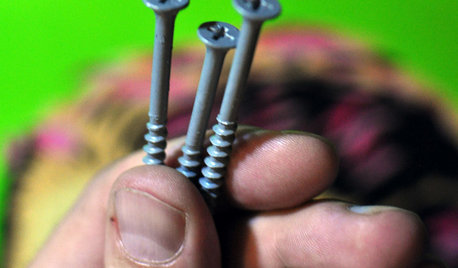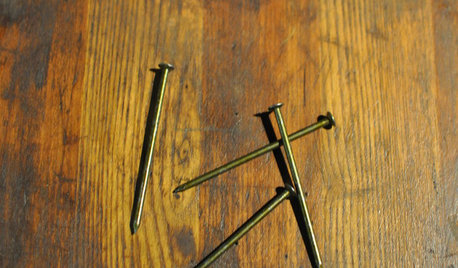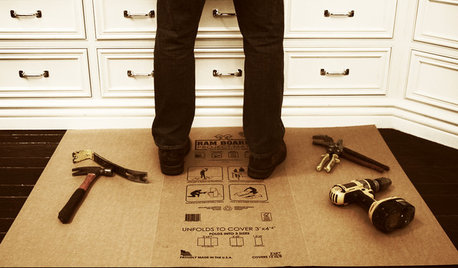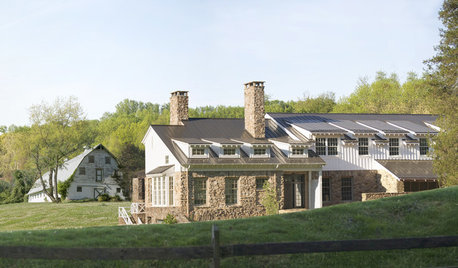nailing or screwing into 155 year old rafters?
bas157
18 years ago
Related Stories

DIY PROJECTSThe Taming of the Screw
Learn the different types and uses of screws to pick the right kind for your next DIY or home improvement project
Full Story
CONTRACTOR TIPSHow to Read a Nail
Learn basic nail types and their uses around the home — plus a historical tidbit you can share to sound like a pro
Full Story
DECLUTTERINGYour Clutter-Clearing Plan for the New Year
Tackle these tasks month by month for a decluttering strategy that will really pay off
Full Story
REMODELING GUIDESThe Hidden Problems in Old Houses
Before snatching up an old home, get to know what you’re in for by understanding the potential horrors that lurk below the surface
Full Story
UPHOLSTERYThe Perks and Perils of Reupholstering Old Furniture
Secondhand upholstered pieces can add character to a room, but beware of bugs, snakes and hidden costs
Full Story
BATHROOM DESIGNOut With the Old Tile: 8 Steps to Prep for Demolition
This isn't a light DIY project: You'll need heavy-duty tools and plenty of protection for your home and yourself
Full Story
FARMHOUSESHouzz Tour: An Old Barn Inspires a Gracious New Home
Graceful and elegant, this spacious home in the Virginia countryside takes farmhouse style up a notch
Full Story
TRANSITIONAL HOMESHouzz Tour: Embracing Old and New in a Montana Bungalow
This home’s exterior fits the historic neighborhood, but its new, more modern floor plan fits the owners’ lifestyle
Full Story
ORGANIZING8 Incredibly Clever Organizing Tricks
A tension rod under the sink; wire and nails in the closet ... these storage and organizing ideas are budget friendly to the max
Full Story
REMODELING GUIDESFinish Your Remodel Right: 10 Tasks to Check Off
Nail down these key details to ensure that everything works properly and you’re all set for the future
Full Story










housekeeping
bas157Original Author
Related Professionals
Everett Kitchen & Bathroom Designers · La Verne Kitchen & Bathroom Designers · Palm Harbor Kitchen & Bathroom Designers · South Barrington Kitchen & Bathroom Designers · Beach Park Kitchen & Bathroom Remodelers · Beachwood Kitchen & Bathroom Remodelers · Tempe Kitchen & Bathroom Remodelers · Vancouver Kitchen & Bathroom Remodelers · Plant City Kitchen & Bathroom Remodelers · Fairmont Kitchen & Bathroom Remodelers · North Chicago Kitchen & Bathroom Remodelers · Prairie Village Kitchen & Bathroom Remodelers · Madison Heights Architects & Building Designers · Oakley Architects & Building Designers · Ronkonkoma Architects & Building Designerskudzu9
beds
DruidClark
bas157Original Author
kudzu9
gzec
bas157Original Author
glassquilt